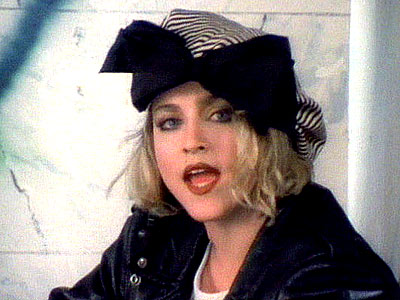by Alafair Burke
I’m still on the road for 212, but was lucky enough to lock in bestselling thriller author, Lisa Unger, for a little chat here at Murderati. If you’re not yet reading Lisa’s books and following her online, you should be. She is not only a master plotter, but also a talented writer whose characters stay with you long after you close the book. And lucky for us, she’s also incredibly thoughtful about the creative process.
Lisa’s excellent novel, DIE FOR YOU, is out in paperback this week.

For readers who don’t know the premise of your wonderful novel, DIE FOR YOU, please tell us a little about the book.
Isabel Raine has the pefect life. She’s a bestselling novelist, close to her family, in love with her husband Marcus. It’s not a perfect marriage; there have been problems — an affair, a miscarriage. But Isabel loves the man she married, can’t imagine her life without him. Then, on a day like any other day Marcus, an inventor of computer games, leaves for an important meeting and doesn’t come home. In the frantic search for him that follows, Isabel comes to realize that the man she married is a stranger. She didn’t even know his real name.
In addition to being a story about Isabel’s search for the truth about her husband, it’s also about marriage and how well we really know each other. It’s about family and the ties that bind. Everyone in DIE FOR YOU has a secret heart. So, it’s about that, as well, how sometimes we hide ourselves from the people we love the most.
You live in Florida, but DIE FOR YOU takes readers to the streets of both New York City and Prague. How did you decide to set the book in these locations, and how were you able to depict them so credibly?
I lived in New York City for thirteen years, and visit many times a year. So it really is one of the places I know best. When I close my eyes, I can hear it, smell it, taste it. And it has occupied such a huge place in my heart and imagination for so long that my novels seem to naturally begin there.
In 2007, I spent five weeks in Prague. And the city itself – its dark history, its gothic beauty – inspired DIE FOR YOU. I wandered the streets of that city with my husband and daughter and just let it sink into my skin. I kept thinking that Prague was a city of secrets, that beneath its pretty cobblestone streets beats a dark heart. I love that energy … it’s the same pulse in New York, and even in Florida. This idea — that beneath the glamour of New York City, the beauty of Prague, or the sunshine of Florida lurks something feral — is fascinating for me. The same might also be said for the lives of many of my characters.

Did your time in Prague change anything about your creative process or writing habits?
Initially, I went to Prague to vacation. I needed a little time off after writing BLACK OUT to recharge creatively. But the city so inspired me that I couldn’t keep the pages from coming. DIE FOR YOU is the first book inspired by a place; so that was a change.
My schedule fell into place much as it is at home; early mornings from 5 AM writing while my husband takes care of our daughter, and afternoons as a mom. But, of course, as a mother nothing is every seamless. Since my daughter always comes first, I have to be creative and very flexible about when I get my pages done. That’s true whether we’re in Prague or Florida. I am always performing a balancing act!
You have an active presence online, with thousands of Facebook friends, regular Twitter posts, and an active blog. What do you see as the advantage, both for you and your readers, of social networking? What do you see as the proper balance between letting your books stand on their own and allowing readers to get to know the woman behind the books?
Facebook and Twitter are fantastic ways to stay in touch with readers. I love the feedback, the connections. And I love the way those connections intersect with the real world, how people turn up for appearances because they know me on Facebook. In an industry that’s changing all the time, Facebook is an important tool for authors in terms of creating exposure and allowing for an unprecedented relationship with readers.
I try to be very organic about my posts and my blogs, only writing when the spirit moves me and only about things that are important to me. So in that way, I’m pretty open. I feel like I owe this my friends/fans/ followers. When they hear from me, I want it to be real – whether it’s about my books, other authors I want to support, what I’m thinking, feeling, listening to, watching.
In some respects, the social networks are about marketing. But the relationships one creates there are true. Finding the balance is tricky. I had a nudge from a follower on Twitter. She said she hoped I was hard at work on the new novel because I hadn’t tweeted in a while. And it’s true that the more focused I am on my work, the less present I am online. It’s about the writing first. Everything else – marketing, publicity, blogging, social networks – come after the craft. I think readers who follow me on the networks know this about me.
I know that you have made book touring a family event. Can you talk a little about your experience touring with your family?
Touring with the family is not for the weak. My daughter was four months old when she went on her first book tour. I couldn’t NOT go; and I wasn’t about to leave my munchkin behind. But getting on the road with your four- month-old, nursing infant requires the mobilization of a small army – my husband, my parents, friends in various cities. Not to mention the gear … stroller, car seat, breast pump, massive diaper bag. Of course, now she’s four – and it’s easier in some ways (less gear, for one thing), harder in others. As crazy as it can be sometimes, I can’t imagine doing it any other way. Touring can be very stressful – and although traveling with your family doesn’t make it LESS stressful certainly – it keeps everything very real. There’s never any forgetting what’s important.
Because I’m on tour right now, I’ve got touring on the brain. Are you willing to share the craziest thing that’s ever happened during your travels?
There have been so many crazy moments on the road, especially with Ocean! There was a funny piece in the New York Times about our various adventures. I always say that she has been breastfed in the parking lots or back rooms of hundreds of bookstores across the county! I had to nurse her before each event to be sure she didn’t freak out in the middle of a talk. At first I used to do it in the car, because I was shy. After a couple of cities, I just asked for a place to nurse before each event. And everyone seemed to take this in stride – media escorts, bookstore owners. The folks at Stacey’s in San Francisco said, “Everything comes after feeding the baby!” And this is so true.

You are known as one of the smartest plotters in the thriller genre, but I happen to know that you don’t outline your books in advance. Tell about your process for creating such seamless plotting and pacing without advance planning?
Aw, shucks. Thanks for that, Alafair. Anything can be the germ for a novel. A voice I hear in my head or someone I keep seeing. It might be a poem or a news story or lyrics from a song. And if it stays and repeats, spins out and grows, then it’s a novel. I never know how a book is going to end, who is going to turn up, or what they are going to do day to day. I write for the same reason that I read, because I want to know what’s going to happen. And it has always been this way for me.
You and I have talked about this before. And it all sounds very magical. But I’m not sure it is really. I have been an avid reader and a writer most of my remembered life. I have studied virtually every type of writing from journalism to poetry, from play- and screenwriting to the novel. My entire education and every goal I’ve had personally and professionally has focused on the craft. So because of that I suspect that I have internalized the form to the degree that it’s almost second nature. I think like a fiction novel.
I am also full of faith and wide open to the possibilities of the blank page every day. So I am fully waiting and ready for the magic. And when the magic doesn’t come, I am dedicated to the craft. Plot flows from character. I hear my characters. I respect and have empathy for them. I get to know them and don’t seek to control their actions or consequences. I am ferociously curious about life and people. And I never get tired of exploring all of these things. And it’s in that place of faith and empathy that my plots evolve, just as life does.
How do you like to spend your time that’s not spent reading and writing?
I am a brilliant golfer. I love it. Can’t live without it. Okay, not really. (Alafair, knows better than anyone what a complete lie this is.) I do, however, have a pretty active lifestyle, enjoying boating, kayaking, tennis, walking, and yoga. My husband and I are total foodies and love to entertain. Traveling is high on our list of the most important things in life, so we make it a point to get somewhere new every year. But mainly, I just enjoy doing all these things with Jeff and Ocean. So even if we’re just home watching a DVD, that’s pretty great, too!
A CHANCE TO WIN A FREE COPY OF LISA’S NEW TRADE PAPERBACK OF DIE FOR YOU.
I hope you enjoyed hearing from Lisa about her writing process as much as I always do. I find her dedication to the art of writing so inspiring. Thanks, Lisa, for stopping by Murderati, especially on… your birthday! Happy Birthday!!
Now, on to the comments section. Of course Lisa and I would both welcome your responses to her remarks. But I’d especially love to hear folks answer the last question I put to Lisa: How do you like to spend your time that’s not spent reading and writing? We have quite a community here at Murderati but we usually talk about our shared love of books. I thought it would be fun to have a day when we talked about our other passions as well. So to enter a raffle for a free copy of DIE FOR YOU, just post your response by 9 am (PST) tomorrow: How do you spend your non-book time?
 Omar LittleThe list did acknowledge a few literary characters, but most of those were discussed in terms of their dual identities, existing both on the page and in film, such as Dexter Morgan, Bridget Jones, and Harry Potter.
Omar LittleThe list did acknowledge a few literary characters, but most of those were discussed in terms of their dual identities, existing both on the page and in film, such as Dexter Morgan, Bridget Jones, and Harry Potter. 



 Better
Better Way worse
Way worse

































